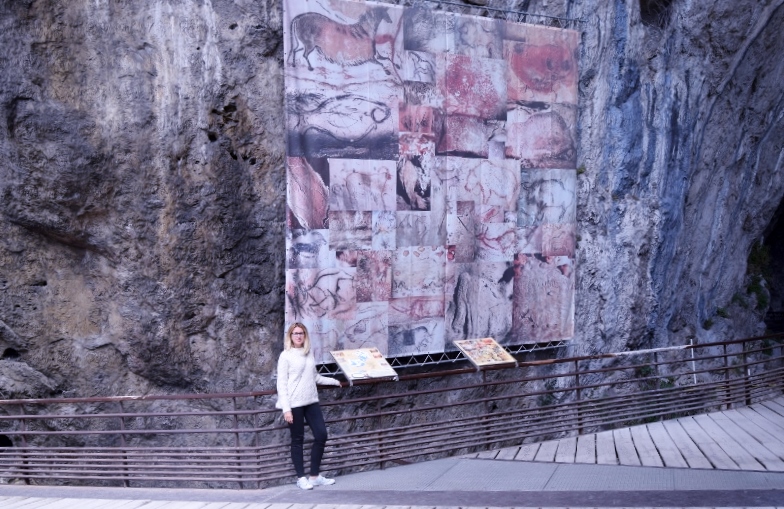[RO] Pe langa necesitatile primare, arta se pare ca este o necesitate mostenita inca din timpurile pre-istorice. Cu toate ca nu stim foarte multe despre stramosii nostri paleolitici, ceea ce a ramas drept dovada sunt picturile rupestre magnifice care ne provoaca intrebari retorice …
[EN] There is one need, apart from the basic needs, that we seemed to have inherited from the pre-historic times, and that is the need to create, to make art. We don’t know too much about our Paleolithic ancestors, but what we know for sure, is that they were artists. And the proof was left behind on walls of certain caves, that can only make us question even more about their lifestyle, culture and beliefs.

[RO]Una din pesterile care a ascuns un astfel de secret este pestera din Niaux, Franta, aproape de granita cu Spania. Am ajuns si acolo. Pestera este deschisa publicului tot anul, cu exceptia sarbatorilor publice. Biletele pot fi rezervate aici, unde se ofera tururi ghidate in franceza si engleza. Sa luati neaparat incaltaminte comoda si non-glisanta.
[EN] One of the caves that is sheltering such paintings is the one in Niaux, France, not far from the border with Spain. The caves are open to public all year round, except for public holidays. You can reserve the ticket on this link and you have the option of a French or English guided tour. It is important that you take walking boots as the ground is very slippery.





[RO ]Eu nu pot sa descriu incarcatura emotionala pe care am asimilat-o acolo. E ceva de nedescris, sa stii ca aceste picturi au fost realizate aproximativ in anul 12000 I.H. Cum traiau acei oameni, ce gandeau, cu ce scop pictau? Se pare ca aceasta pestera nu era pentru a se adaposti, ci strict pentru a crea (picturi pe pereti in care erau reprezentate 3 tipuri de animale – cai, bizoni si capre; simboluri pe care nu le putem descifra; si animale sau pesti ingravati in podea). Era legat de vreun ritual? Nimeni nu poate rezolva acest mister la moment … si probabil ca va ramane mister pentru totdeauna. Cert este ca eu una am realizat cat de mici suntem in comparatie cu istoria si cat timp a luat sa fim homo sapiens din prezent. De aceea, e datoria noastra sa pastram si sa iubim aceasta planeta, ca sa ramana la fel de uimitoare si in viitor.
[EN] I can’t describe how emotional I felt to see it with my own eyes. It is indescribable to know that that is left from around 12000 BC. How did those people live, what did the think about, why were they doing those paintings? It looks like that particular cave wasn’t for living there, just for painting (3 types of animals: bisons, horses and ibex; symbols that don’t have a meaning for us; engraved animals and fishes on the floor). Was it a ritual? It is still a mystery and who knows, maybe we will never find out. But I have certainly realized how small we are in comparison to history, how long it took to become who we are today as homo sapiens and how we take it for granted. This is why it is our duty to preserve and love this planet and keep it as fascinating for the generations to come.


PS. Obviously, couldn’t take pics inside 🙂

One response
[…] nature around; did kayaking; visited a beautiful cave and saw paintings that dated 12.000 years BC (see more about it on this article); visited places where Van Gogh used to get inspiration from; went to nice restaurants for a menu […]